Local Heroes 2011
The Santa Barbara Independent's 26th Annual Ode to Our Region's Most Important Residents
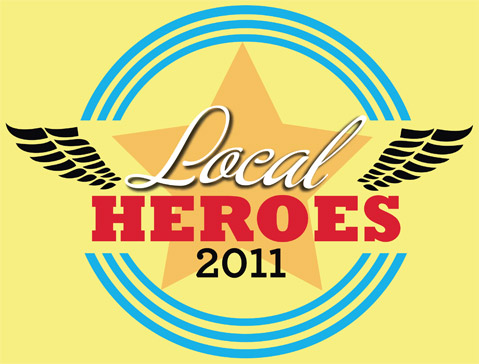
“It was one of those great stories / That you can’t put down at night / The hero knew what he had to do / And he wasn’t afraid to fight.”
Those are the lyrics that musical legend — and Santa Barbara County resident — David Crosby penned for his song “Hero,” and they’re a perfect introduction to the 20 men, women, and organizations chosen in 2011 as Local Heroes by The Santa Barbara Independent.
Everyone selected has a heartening tale: the mother who fought to get dyslexia-assistance programs into the schools; the retired couple who raise money to buy goats and cows for Rwandan genocide survivors; and the cycling enthusiast who puts about 1,300 new bikes into the hands of young riders every year. And with tenacity, each of the following heroes has fought tirelessly to bring their visions of helping others to fruition.
Read on for the inspiring work being done by your neighbors and friends.
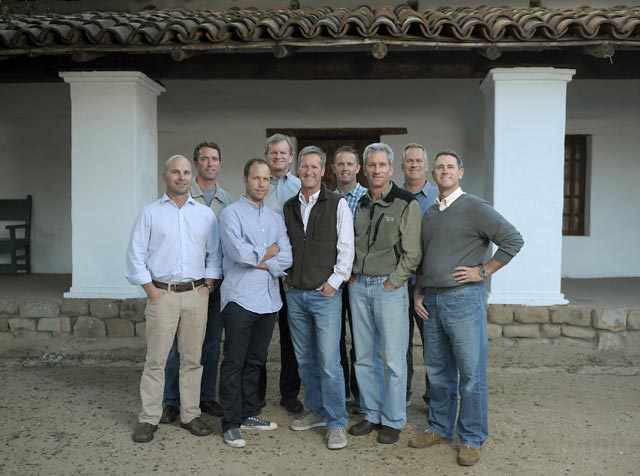
The Friendship Paddle: Community-Powered Hope
When John McFadden’s brother Doug McFadden was diagnosed in 2003 with an inoperable brain tumor, John and their wide circle of friends and family organized themselves into an ocean-venturing flotilla of support and solidarity. Launching their paddle boards at sunrise from Santa Cruz Island’s Forney’s Cove, 50 men made the 24-mile journey across the dark, choppy Santa Barbara Channel — tasting, for a moment, Doug’s uncertainty and isolation. “We wanted to do it in honor of Doug,” explained John. “We wanted to share in the fear of the unknown.” The group landed at Hope Ranch Beach later in the day and was greeted with hugs and tears. “It was magic,” said John.
Thus, the Friendship Paddle was born, an annual relay of paddlers that takes place in the channel in the fall. While the first paddle wasn’t designed to (and didn’t) raise any funds, the nonprofit has organically morphed into a vehicle through which money is collected and then donated to a selected beneficiary every year. The cash is meant to take care of financial worries like the mortgage and bills — “The tedious parts of life,” said John — so the recipient can stop working for a while and spend time with his or her family.
So far, the Friendship Paddle has raised more than $1 million, most recently hosting an event for a longtime city firefighter with cancer. A number of area businesses donate food and equipment every year, and a fleet of fishermen volunteer to escort participants during their journey. In 2008, a junior version of the Paddle was started — The Keiki Paddle. Primarily meant to foster an appreciation for life and celebrating the present, John said the money is more of a perk than a focus. “We want to bring your family into our family of friends,” said John.
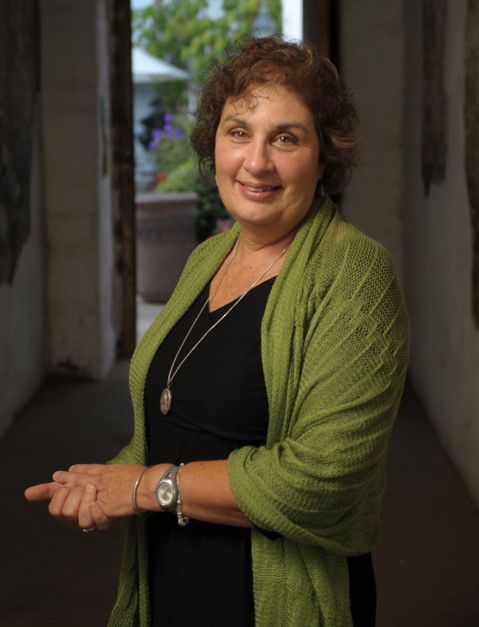
Cheri Rae: Education Advocate
There’s no ignoring community activist Cheri Rae, try as many government bureaucrats may. Best known as a neighborhood preservationist, Rae has recently focused her energies on “special education,” that vast black hole of dysfunction for many students and their families. For years, Rae struggled to help her son get the better of reading problems that had gotten the better of him. A smart and talented kid, he was reading at a 2nd-grade level in the 7th grade. That’s when Rae first learned he might have dyslexia. Tough, acerbic, and tenacious, Rae pushed, prodded, and poked school district officials to provide her son the assistance to which he and all special education students are legally entitled. After 180 hours of intensive — and expensive — training from Lindamood-Bell educational instructors, Rae’s son managed to catch up with his classmates. “But I realized you can’t rescue people one kid at a time,” Rae said. “One in five kids has some form of dyslexia.”
A freelance writer, Rae wrote about her son’s struggles in various publications, including The Santa Barbara Independent. She also lobbied the school board. With the appointment of Dr. David Cash as the school district’s new chief executive, Rae found an open set of ears. Cash and the school board approved spending $75,000 to give 35 teachers and administrators the Lindamood-Bell training that helped Rae’s son. But the intensive four-day training would take place in San Luis Obispo, meaning the cash-strapped school district would have to shell out $40,000 for food and lodging. District efforts to get the company to dispatch its trainers to Santa Barbara instead went nowhere. Then Rae got on the phone to contacts she’d developed at Lindamood-Bell. That did the trick. The training would take place in Santa Barbara, after all. At a recent school-board meeting, Rae was thanked by name. “That doesn’t happen too often,” she said. “It’s a nice shift.”
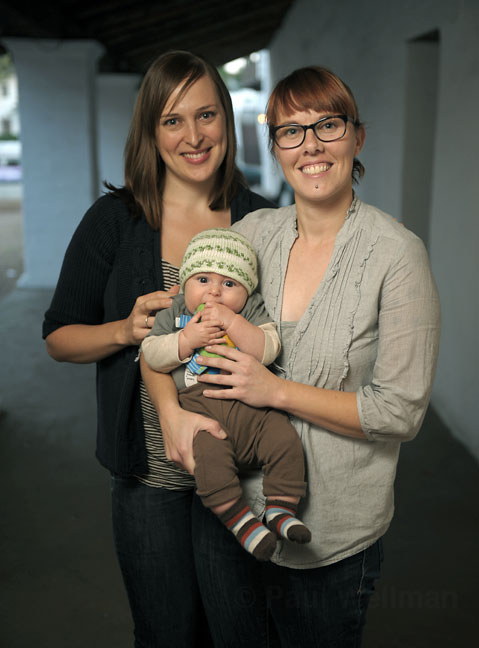
Alena Marie and Tara Uliasz: Social-Justice Power Couple
Since first meeting at UCSB, Alena Marie and Tara Uliasz have seen eye to eye. Now, some 13 years later, they have wed, had a baby, and morphed their passion for social justice into a lifestyle that’s all about putting the community first. Alena, a former S.B. Rape Crisis Center education coordinator, now splits her days between caring for 4-month-old Adrian and working at Just Communities, a Central Coast organization that trains people across sectors on the importance and application of cultural competency.
“I started volunteering for Just Communities’ youth program when I was working at the Rape Crisis Center and totally fell in love with it,” Alena said. “The more I was working with youth, the more I started understanding the problems going on with our schools, especially in terms of inequity in the achievement gap and unjust ways students were being treated, in terms of harassment and bullying, all surrounding race, sexual orientation, and other issues. [Now, I’m] working with families, working with youth, and working with educators and finding ways to bring them together.”
It’s a similar mindset that led Tara to her career; she fell into special education by way of a part-time job at Devereux School during college, and now teaches special ed full-time at Goleta Valley Junior High. “Teaching is very different than social-justice organizing, but I think they’re definitely related,” Tara said. “I feel like I’m the luckiest person ever. It’s really the relationships that I have with my students that fulfill me on the daily.”
However, it’s not just their work that makes these two Santa Barbara heroes. Whether it’s Tara’s time spent cochairing the Fund for Santa Barbara’s Grant-Making Committee or skating with derby team The Brawlin’ Betties, or Alena’s advocacy for the newly opened Santa Barbara Birth Center, these women radiate warmth and facilitate acceptance for some of our community’s more vulnerable members.
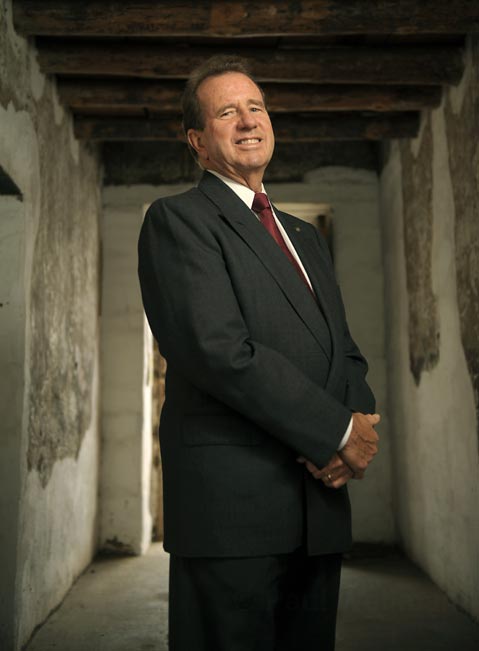
E. Russell Smith: Wheelchair Guru
Years ago, E. Russell Smith would think to himself, “When I make a lot of money one day, I can make a difference.” A Rotarian since 1985, Smith adopted the group’s international motto of “time, talent, and treasure,” and eventually came across an opportunity that allowed him to make a difference for thousands of people around the world. Smith got involved with the organization’s international projects in 1993, going on a surgical expedition to assist with cataract surgeries for poor people who had no access to the surgery otherwise.
But it wasn’t until a decade later that Smith really found his calling. In 2003, as the Rotary’s liaison to area nonprofit Direct Relief International, Smith was put in contact with an engineer. The Los Angeles–based engineer — after witnessing a third-world cab almost run over a disabled person crawling across the street — had begun making wheelchairs to be distributed in developing countries. The wheelchair is a simple design: A white plastic lawn chair with the legs removed is fastened to a sturdy metal body, with two off-road mountain-bike tires on each side. For a shipment of 550 wheelchairs, the cost is roughly $25,000. Smith contacted his Rotarian network (there are approximately 1.2 million Rotarians in 170 countries), and then set about raising money in Santa Barbara for the shipping costs and finding people around the world who could benefit from the wheelchairs. “It opens up a lot of possibilities, giving people an opportunity they didn’t have before,” Smith said.
In just nine years, 14,000 wheelchairs have made their way all over the world to countries including India, Bangladesh, South Africa, Mexico, Madagascar, Sri Lanka, Pakistan, and Iraq. “It’s been really amazing,” Smith said. “There’s no limit for the opportunities.
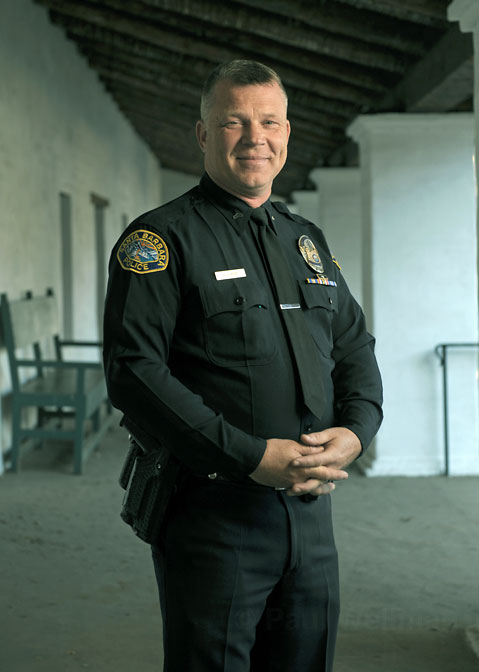
Keld Hove: Helping the Downtrodden
Santa Barbara Police Officer Keld Hove likens his job to juggling nine balls on fire. “When one drops, you start all over,” he said. “And they always drop.” For the past two years, Hove has worked the restorative policing beat, meaning it’s his job to find help for people who’ve fallen through every safety net the South Coast has to offer. Sometimes that means driving a bipolar schizophrenic to the Veterans Hospital in West Los Angeles. Other times, it means getting an alcoholic into a treatment facility as far away as Berkeley. Or putting a pregnant young woman on a bus back home to her mother.
All this is immensely time-consuming. But so is repeatedly locking the same people up for the same violations. So Hove has been cut loose from “chasing the radio” like other patrol officers — he’s more like a social worker with a badge. When Hove first got the restorative assignment, he seemed an unlikely choice. His reputation among street people was that of a relentless hard-ass. But Hove, a native of Denmark and former martial-arts instructor, brought the same intensity he’d demonstrated writing street people tickets to finding them the appropriate services. Hove understands the frustration many have with the behavior of street people. “There’s an old African proverb,” he said: “Getting mad at the fly won’t make it go away.”
Hove has also been instrumental in getting a restorative-court program off the ground, creating a parallel legal track for people open to making a change. When the program started six months ago, 10 clients were involved. Now, there are 85. Hove said there’s no way to judge who’s going to succeed and who will fail. Relapse, he knows, is sometimes inevitable. In spite of this, Hove’s optimism is striking. “When they listen and change,” he said, “that’s success.”
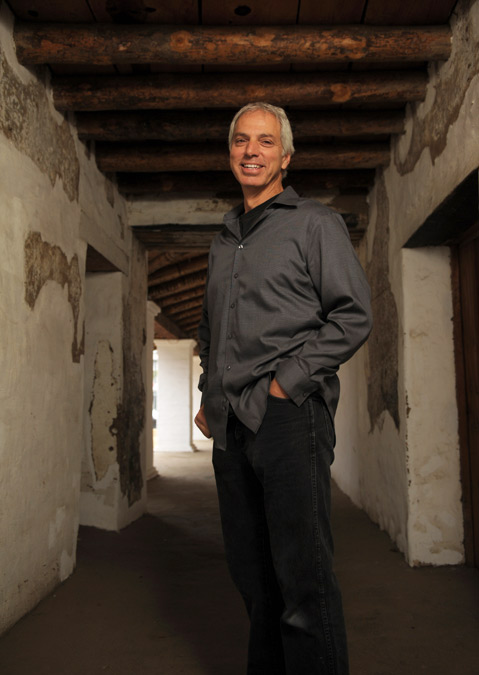
Lou Ventura: Bikes to Kids
Everyone remembers their first bike, said Lou Ventura, the Isla Vista property manager who was born in Santa Barbara and now lives in Goleta. His was a Schwinn with a banana seat and a sissy bar. Regardless of the model, Ventura said, “It’s all about independence, independence, independence. It’s like, wow! It’s about learning, ‘I can do.’” Ventura, now 52, remembered being in the Unity Shoppe with his son about nine years ago, when he noticed there were no bikes. Rather than just filing this observation away, Ventura decided to do something about it. What’s emerged from that light-bulb moment is Kids and Bikes, a nonprofit that yearly gives away about 1,300 new bikes to about 35 charities and nonprofits to get them into the hands of young riders.
Ventura hits up friends and associates for cash donations, about $40,000 annually. He buys crates of brand-new bikes straight from China. When the bikes arrive, he hosts an assembly party in his backyard a few weeks before Christmas. The event qualifies as a small invasion. About 750 people show up — though not all at once — to screw in the pedals, attach the seats, insert the kick-stands, and make sure the bikes are otherwise roadworthy. Other friends provide the food. The bikes are then given to any number of nonprofits for final distribution.
Throughout the rest of the year, Ventura and crew distribute another 500 to 600 bikes. In recent years, another volunteer — an importer/exporter with contacts in China — has begun providing bicycle helmets to go with the bikes. Ventura estimates he spends about half a year working on the bike distribution, but mostly, he sees himself as an overgrown cheerleader. “It’s all about the community,” he said. “Community, community, community.”
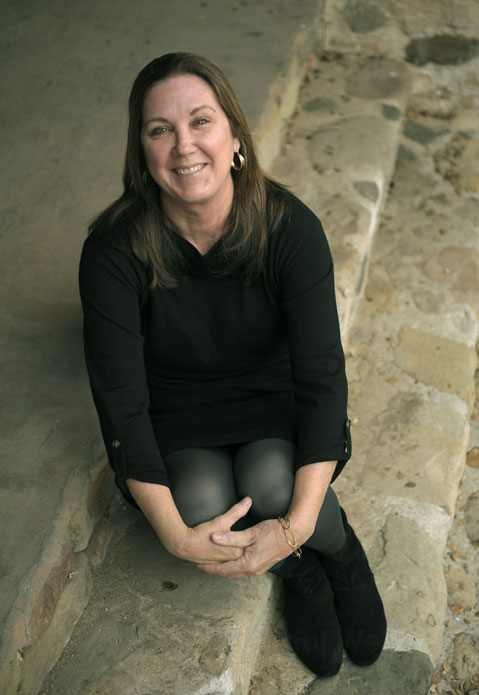
Patsy Hicks: Arts Education Leader
Since Patsy Hicks took over as director, the education program at the Santa Barbara Museum of Art (SBMA) has blossomed into a multifaceted and supremely flexible model for 21st-century community outreach. Whether it’s families with young children, teenagers, college students, teachers of all kinds, or just individuals who want to learn more about looking at and making art, Hicks has found — and sometimes invented — new ways of bringing SBMA, its collections, and its talented staff to the public. The doors to the museum are routinely thrown open at all hours and on weekends to let fresh air in and culture, fun, and learning opportunities out.
Nothing could be more symbolic of Hicks’s approach than the brilliant Studio Sundays on the Front Steps, in which people of all ages gather to share materials provided by the museum and receive instruction from teaching artists in collaborative art lessons that last all afternoon. On First Thursdays, the museum’s Family Resource Center is packed with parents and children sharing the same kind of intimate experience.
From the museum’s Nights and Atelier events to the docent-led classroom and gallery visits offered for free to area grade schools, every individual SBMA Education session has a theme, a specific medium and technique to be explored, and a carefully crafted tie-in to something that is currently on exhibit. It’s the thoughtful, creative attention to detail that marks everything Hicks does, and the result has been higher levels of interest and satisfaction among participants across the board. When asked about her personal agenda and priorities, Hicks is typically modest, saying that she “wants to be a better listener” when it comes to finding out “what the museum can do for the people of Santa Barbara.
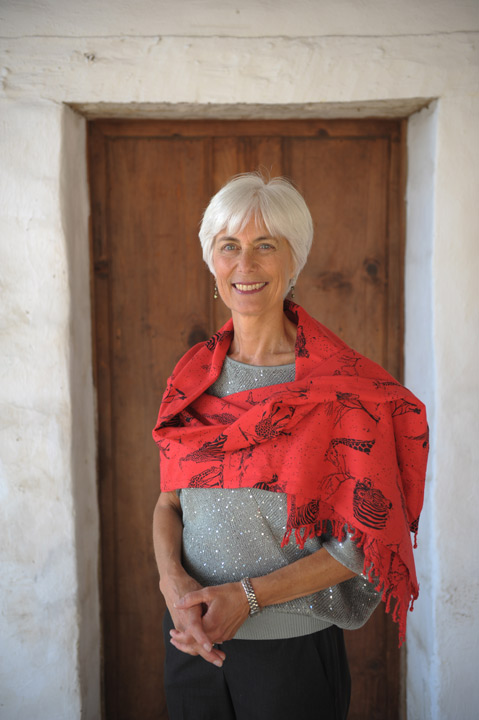
Susan Saperstein: Community Caregiver
Susan Saperstein has worked part-time as a hospice nurse at Visiting Nurse and Hospice Care for the past 16 years. And since 2004, she, along with her partner Holly Gendron, has also poured her heart into a sister hospice program in the small village of Luanda, Kenya.
Her work in Kenya began when she and Gendron went to a cultural-diversity conference. Subsequently, they applied to be partnered with a hospice in Africa. The hospice they were connected with turned out not to really be a hospice, but simply three men who realized their community needed help as HIV/AIDS decimated the poor community around them.
Saperstein and Gendron went to work, raising awareness and money for the people of Luanda. Today, there is a clinic that has an inpatient facility and a palliative-care group and also does HIV outreach. But Viagenco — the name of the program — has become more than a hospice. A micro-finance program is now available to women in the community, and it also supports 150 orphan children in attending school and three women currently in nursing school.
The mother of two is kind, positive, and understanding, characteristics that go well with the work she does. “I have the privilege of being with people when they’re completely themselves because of crisis,” Saperstein said. “I learn a lot about myself, too, because I have to face my own mortality.”
Saperstein and Gendron partner with area groups like UCSB’s Engineer’s Without Borders, which has built wells and incinerators in the village; Direct Relief International; and Crane Country Day School, which sponsors six kids to go to school. “It’s been this little seed of an idea that has blossomed into this amazing project,” Saperstein said. “I am not this project. This belongs to a lot of people and to our community.”
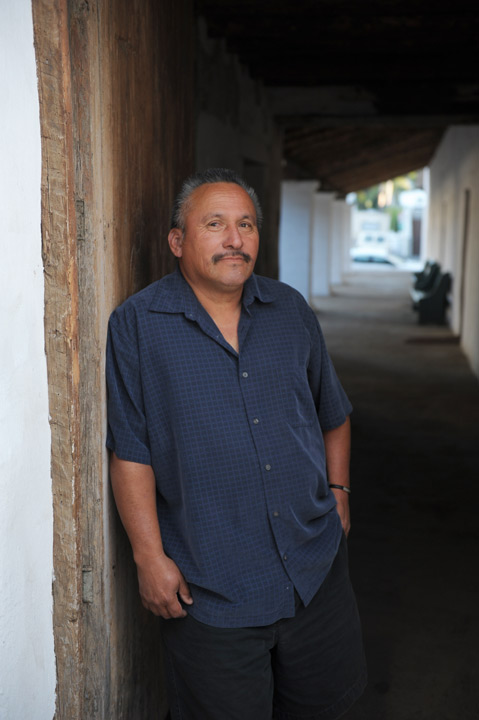
John Vasquez: Fundraising Barbecuer
Don’t barbecue over charcoal. Use mesquite or, better yet, oak. Don’t poke meat with forks or tongs. Use gloves to turn it over with your hand. Season your proteins the day before. Consider mixing red wine and teriyaki sauce in a spray bottle to keep tri-tip moist while cooking. These are just a few tips that barbecue master John “Chino” Vasquez is happy to share. He’s also happy to share his expertise in cooking over burning coals to the benefit of the community.
An MTD bus driver, Chino lends his free time to hosting 10 or more fundraising barbecues a year for up to 300 people — to help pay for items such as school uniforms, hospital bills, and funeral costs. He first began honing his grilling skills at the Elks Club in Lompoc, where he lives; he can’t even remember the first time he barbecued to raise money. But now, people regularly call him up requesting his services, and he never says no. In the last few years, three MTD employees — Supervisor Bob Nilsson and drivers Juan Valeriano and Gus Pena — passed away, and Chino cooked at barbecue benefits for all of their families.
Although he has sat behind the wheel of an MTD bus for 21 years, Chino began his driving career during the Vietnam War — he was drafted in 1968 after graduating from Santa Barbara High — shifting gears on heavy trucks and chauffeuring for General William Westmoreland. Chino said he sees little division between his day job and his fundraising barbecues. “I try to help the public as much as I can.”
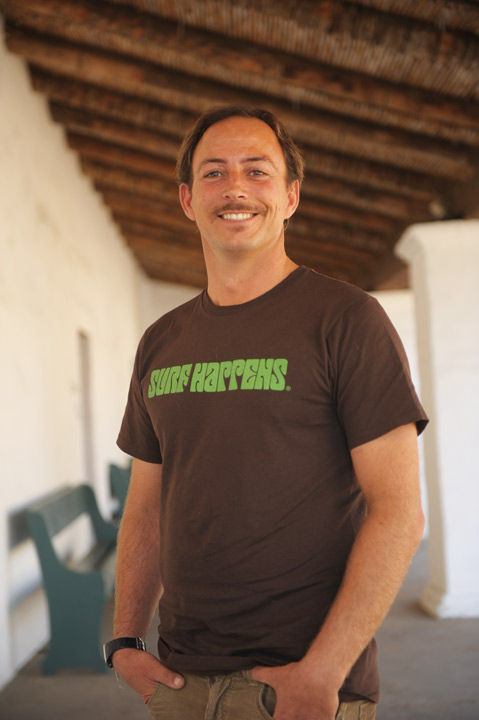
Christopher Keet: Surfing Teacher and Mentor
Appropriately, water is the very first thing Chris Keet remembers. The native Santa Barbarian, who grew up on a sailboat along the waterfront, has taken his lifelong love affair with the ocean and parlayed it into a living. The son of two educators, Keet, who himself became a father this year, has spent the last 13 years helping grow the grommets of Santa Barbara’s extended surfing family into respectful, sensitive-hearted, and environmentally-minded global citizens. His philosophy is one part Golden Rule and one part ocean water. “Just about every lesson you need to learn can be found out [in the ocean],” said Keet about his multifaceted nonprofit Surf Happens program. “But it all comes back to being good to one another. It is the people in your life that really make it worth living.”
Keet reckons he has worked with more than 10,000 people over the years via various Surf Happens offerings (which run the gamut from after-school programs and one-on-one high-performance coaching sessions to rehabilitative group surfs with cancer survivors and amputees). His job has him playing the roles, often all at once, of surf instructor, personal trainer, mentor, and guidance counselor to wave riders of all ages and skill levels.
In addition to running Surf Happens, Keet is contest director for the annual Rincon Classic, arguably California’s most storied amateur surf competition. (It was Keet who led the charge to resurrect the Classic more than a decade ago after it had failed to run for a few years in a row). “Since college, I wanted to figure out how I could do [surfing] for a living and give back to this amazing sport and this incredible community that I grew up in,” said Keet. Lucky for all of us, he has figured out the formula just fine.
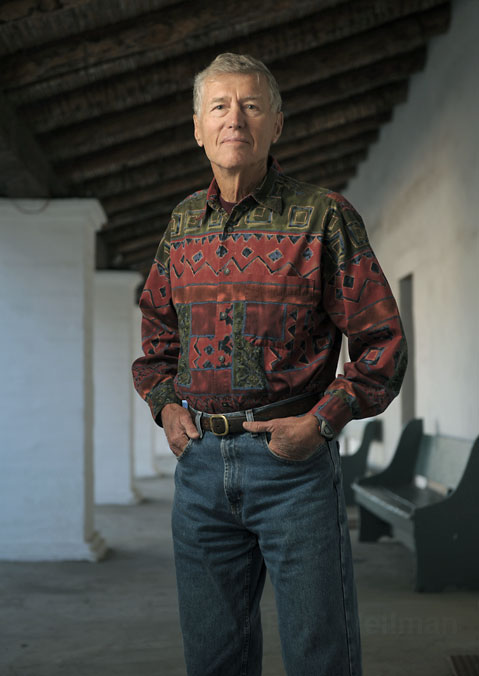
John Brennand: Going the Distance
When a distance-running boom swept across the nation after Frank Shorter’s Olympic victory in 1972, Santa Barbara was far ahead of the pack because of John Brennand’s leadership. He arrived here in 1962, joined a running club that became the Santa Barbara Athletic Association, and put his planning talents to work — he has a master’s in engineering from MIT — in service of the sport. “Whenever there was a race in town, John put it on,” said Wally Marantette, who learned the ins and outs of directing a race from Brennand. “We call him the godfather of Santa Barbara running.” Brennand was a founder of the S.B. Marathon in 1965, when it was one of few such races in the nation. Each runner wore a number that he had made by hand on butcher paper the day before the race. The night after the race, Brennand typed out the results at home. He kept the marathon going until 1984, the year when he was recruited to be technical director of the Olympic marathon in Los Angeles. Brennand had always encouraged women to run in his races, and it was fitting that L.A. had the first 26.2-mile Olympic championship for women, won by Joan Benoit. He also started the S.B. Half-Marathon, which is still going strong and is a big-time fundraiser for student athletic programs. Brennand is quite the runner himself. He ran a two-hour, 28-minute marathon at the age of 43, and this month, at 76, he won the 75-and-older division of the S.B. Half-Marathon by 10 minutes in 1:52:36.
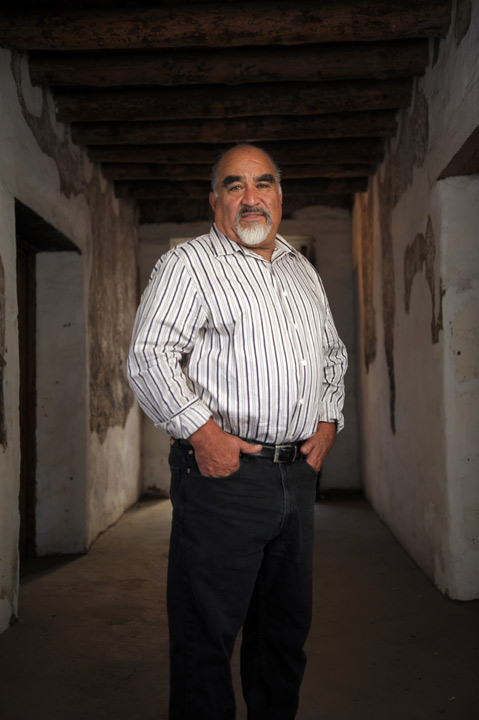
Hugo Banales: MarBorg’s Driving Dancer
Fred Astaire got to dance with the likes of Ginger Rogers and Cyd Charisse. By contrast, Hugo Banales, a truck driver for MarBorg Industries for the past 31 years, has been dancing with massive, unwieldy roll-off boxes that, when full, can weigh more than 20 tons. But if you listen to MarBorg customers, Banales is by far the more nimble, precise, and fearless of the two.
Banales was the first driver to deliver a roll-off box — known as a Dumpster to the layperson — for MarBorg, and when it comes to getting into tight, difficult spots, Banales clearly knows how to thread the needle. He’s unfazed by the prospect of backing his truck up a steep, winding driveway with little clearance on either side. Once, he removed both of his side-view mirrors to deliver a roll-off box down a particularly long and narrow passage. After the recent spate of wildfires, Banales was in high demand by households in distress, delivering roll-off boxes under the most precarious of circumstances.
There’s more to Banales’s talent than art for art’s sake: By placing a roll-off box close to the construction (or demolition) site — as opposed to 250 feet away — he saves customers incalculable time and money. A native of Mexico who moved to Santa Barbara in 1968, Banales is also both a chef and a shaman. His recipes for food and medicinal potions usually begin the same way — with 10 heads of garlic (that’s heads, not cloves) — and are as intricate and precise as his driving. “The trick is to not be nervous,” he explained. “I’ve been doing this so long, I never get nervous.”
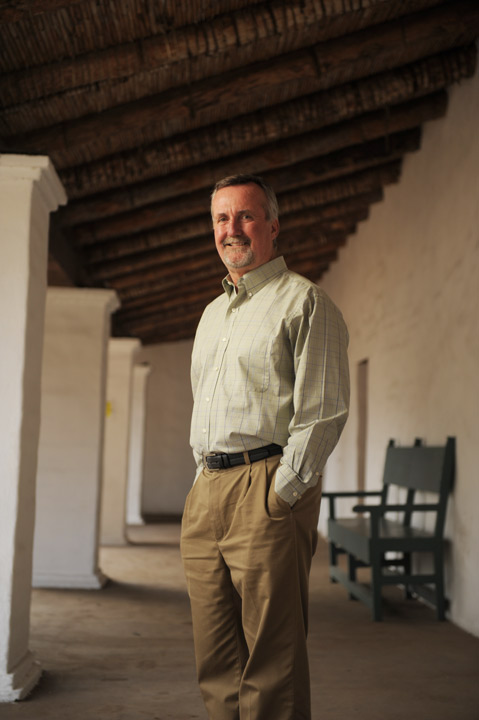
Bren School of Environmental Science & Management: Eco-Problem Solvers
Academia is notorious for producing smart people with lots of degrees but few real-world skills. The Bren School of Environmental Science & Management at UCSB is shaking that model to its core by annually churning out practically trained graduates who relish working in teams on the world’s most pressing ecological problems.
Created as a two-year master’s degree program in 1994 and now graduating about 80 or so students per year — not to mention the roughly 50 people working on PhDs — the Bren School’s mission, according to the current dean, Steve Gaines, is to answer this question: “How do we tap the creativity and bring together complementary disciplines to solve these complex environmental problems and do it in a way where we pick up the pace and make those solutions happen faster than the problems?” To do so, they attract students from across the globe with backgrounds in everything from biology and physics to economics and art, put them together into teams of four to six, and then solicit environmental problems from actual agencies and companies to be solved as each groups’ thesis project. In terms of environmental studies, it’s a revolutionary and world-changing model.
Both Gaines and Jeff Dozier, the school’s first dean (from 1994 to 2000), credit UCSB’s focus on interdisciplinary studies as the perfect Petri dish. “We wanted to do it in a way that supported the strengths of the campus itself,” explained Dozier, who also said that the greening of the school’s buildings has made their mission much more clear, which makes students happier and easier to teach. “This is a school that really believes in what it’s teaching.”
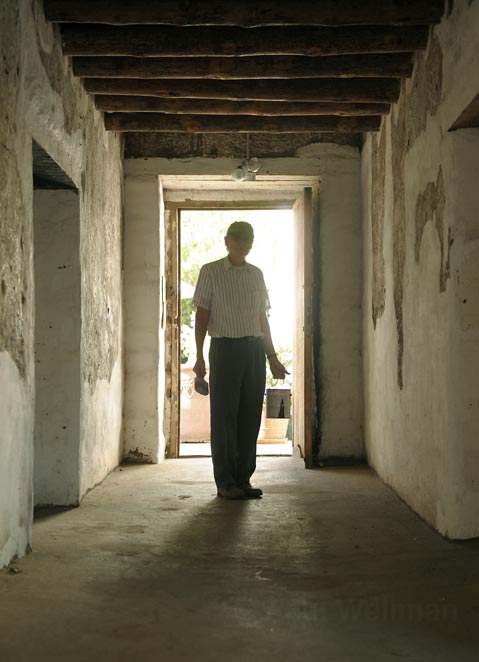
Ed Graper: Goleta’s Graffiti Fighter
In an age of graffiti gone wild, Goleta’s walls are refreshingly free from spray-painted signatures. That’s thanks almost solely to the efforts of Edward Graper, who started painting over tags about 14 years ago and now oversees a volunteer program that covers 4,000 or so tags per year from Puente Drive to the Bacara.
It started when Graper was president of the Rotary Club of Goleta Noontime and the need for graffiti removal arose, so he painted over the first spray-painted wall himself. “The next day, I looked at it and thought, ‘This is kind of awesome,’” recalled Graper, who now mixes the paint himself, pays for most of the expenses, and coordinates a team of about five people who paint over tags and 10 folks who will call in to report new vandalism.
“We will clean up anything,” said Graper. His fast and constant work has made Goleta a less alluring place to spray paint, as your tags rarely get seen by anyone else. “Most of the taggers have been driven out,” said Graper. “It’s no fun, and they get arrested.”
Graper also sponsors high school foreign-exchange students, mentors other “on the edge” high schoolers at Dos Pueblos High, and quietly supports, among other programs, the Los Prietos Boys Camp, the Scholarship Foundation, and a home for abandoned and abused girls in the Philippines.
As to why he does it, Graper responds matter-of-factly. “When you’ve got a few spare minutes, what do you do? I don’t play golf. I don’t own a TV. You’ve got to be useful.”
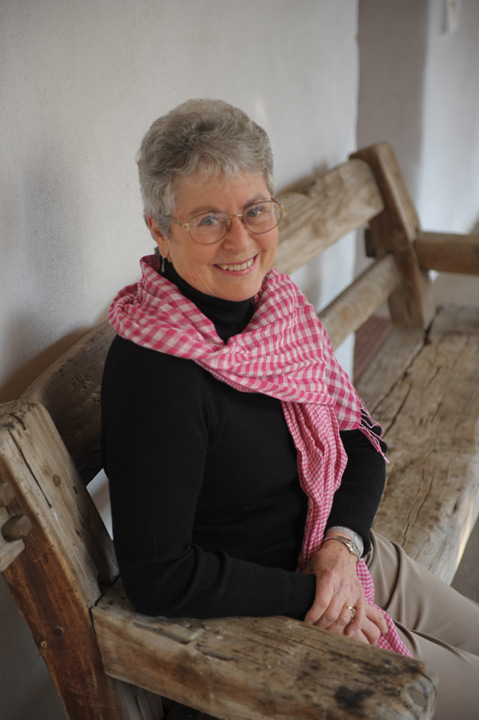
Toni Straka: Modesty at Its Finest
Toni Straka doesn’t like to talk about herself. “What’s there to say?” she asked during our chat. Turns out, there’s quite a bit. The longtime Santa Barbara resident and married mother of two has, for more than 50 years, imbued our seaside hamlet with her selfless altruism, volunteering untold hours to a number of organizations.
Straka was recently elected president of Cottage Hospital’s Auxiliary unit. First joining the organization in 1961 while a kindergarten teacher at Garfield School, she now oversees some 600 other volunteers who work at the information and admitting desks, and any other area of the hospital that needs a hand. “They’re probably the first person you meet and the last person you see,” Straka said. Cherishing the connections she makes with her colleagues and patients, and expressing her sincere desire to put others first, she explained, “If we can make a day of surgery go smoother for someone, then it’s worth it.” And, she continued, the Auxiliary members will prove instrumental in making Cottage’s move to its new campus an easy one.
Straka served as education director at First United Methodist Church for 20 years and now organizes its weddings and events. She also helped develop Cottage’s Spiritual Care Program. “You feel like you’re walking the walk,” she said of practicing religion and volunteerism. When she’s not wrangling members of the Prime Time Band — a group of 50+-year-old musicians, both amateur and pro, of which Straka is the manager — she plays percussion. She’s also a former boardmember and president of Family Service Agency — nurturing it into the humanitarian powerhouse it is today — and a current usher for the Santa Barbara Symphony. “Being with people is my hobby,” Straka summed up. “[When volunteering], I think to myself, what can I do to make your day better?”
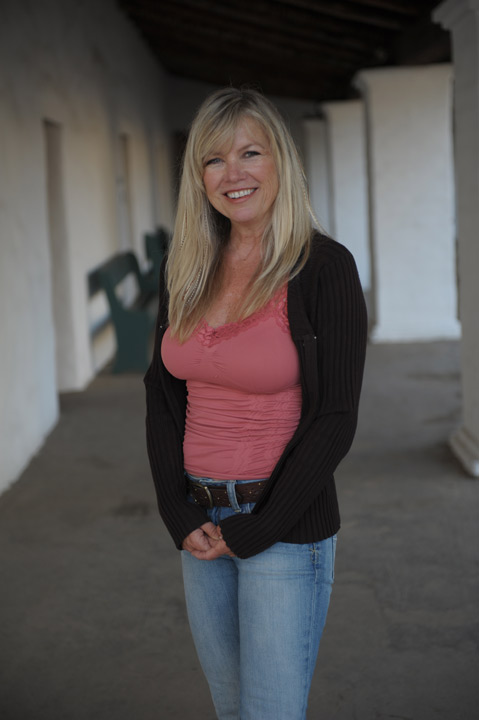
Nancy Earle: Nurturing Through Music
When Nancy Earle founded the Star Jasmine Music Foundation (SJMF) in 1996, she was looking for a way to find solace through music. Begun as a tribute to her late daughter, Jasmine, the victim of a tragic accident at the age of nine, SJMF first manifested itself as a compilation album (featuring Dave Mason, Kenny Loggins, Steve Winwood, and many more) before growing into JAMS (Jasmine’s Alternative Music School), a nonprofit school dedicated to putting music in the hands of Santa Barbara’s at-risk youth. Tucked into an inconspicuous retail space on Milpas Street, Earle’s JAMS currently provides low- to no-cost practice space, music-exploration camps, and recording time to more than 20 kids, most between the ages of 12 and 18, as well as collaborative outreach programs with organizations like Sarah House and Girls Inc.
“These are kids that are at that age when you just kind of need a little extra guidance,” explained Earle, citing students who have traded their gang-imbued pasts for musical instruments by way of JAMS’ free weekly Teen Night sessions and concerts.
Armed with a room’s worth of traditional (keyboards, guitars, bass) and more worldly (hand drums, gongs, ukuleles) items, JAMS currently offers instruction, as well as a safe haven for kids simply looking for somewhere to play, though Earle is still dreaming of something bigger (namely, a larger facility, soundproofing capabilities, and more volunteers). Still, the school’s grassroots approach to community building seems to be working — and growing; JAMS will soon start offering music-exploration sessions for children as young as 10 months old.
“Playing music builds self-confidence, it builds communication skills, and skills these kids can take into the world,” Earle said. “But music also touches your soul; it allows our emotions to breathe.” And that’s something everyone can benefit from.
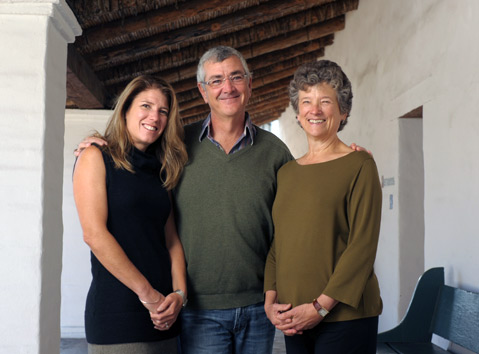
ICAN: Incredible Children’s Art Network
There is no doubt that art and music are fundamental touchstones of our culture, but, after nearly a decade straight of wicked budget cuts, these timeless pursuits have been rendered all but extinct in many of Santa Barbara’s public schools. However, thanks to Jim Kearns and the art-minded philanthropy of the Incredible Children’s Art Network (ICAN), extinction of the arts during the school day won’t be coming anytime soon.
Nearly seven years ago, Kearns, working with a “little funding group,” started giving anonymous grants to certain Santa Barbara elementary schools, earmarked specifically for art programs. Drawing inspiration from the celebrated art offerings at Montecito Union School and the volunteer work there by parent/teacher Kathi Scarminach, the idea, explained ICAN Director Amy Schneider, was pretty simple — to offer the same level of instruction and enrichment enjoyed by kids in Montecito for the kids attending some of Santa Barbara’s most economically disadvantaged elementary schools. “Basically, we want to provide for the kids that would be least likely to have access to these opportunities anywhere else,” said Kearns.
The giving, which pays annually for every aspect of an art program, save for the actual classroom space, began at Adelante Charter School (then known as César Chávez) and, in the years since, has grown to include Franklin, Adams, McKinley, and Harding elementary schools. Further, by officially forming ICAN last year, Kearns and company finally stepped out of their role as “anonymous” donors in order to further grow their philanthropic efforts. In addition to plans to expand their visual arts offerings to other area schools, ICAN launched a new after-school ensemble music program at Franklin Elementary School last winter that is already drawing rave reviews. “We like to think about it as a gateway drug,” joked Kearns about ICAN’s programs, “a gateway to success and feeling good.”
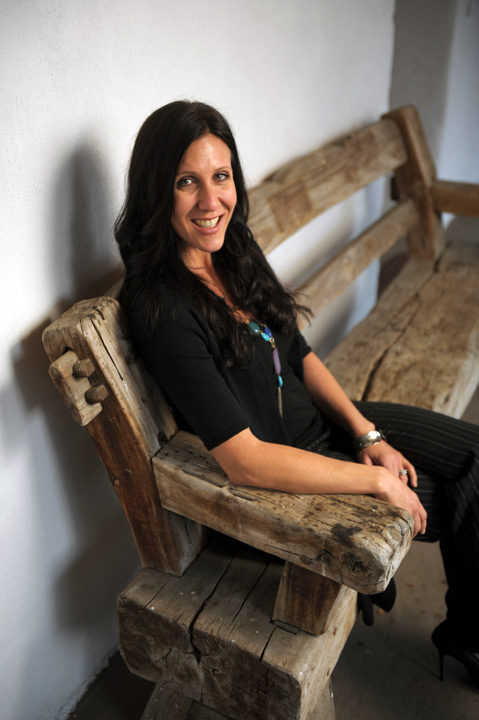
Nikki Katz: Caring for Kids with Cancer
Before Nikki Katz started the Teddy Bear Cancer Foundation eight years ago, there was no financial support for parents of children with cancer in the tri-county region, so health-care costs threatened to put many a family out on the street. Katz learned that fact while sitting in her car on a phone call with a good friend in 2002, while she was volunteering in pediatrics at Cottage Hospital and working as a waitress, bartender, and esthetician. “I had an epiphany,” said Katz, who got off the phone, grabbed the yellow pages she’d stashed in her car, and began calling everything associated with cancer. “I knew what I wanted to do.”
A naïve sort of serendipity put her in front of the right people — namely S.B. philanthropists Larry Crandell, Eloy Ortega, Steve Cushman, Tom Parker, and Earl Armstrong, who formed the “Grizzly Club” — and the foundation started supporting families from San Luis Obispo, Santa Barbara, and Ventura counties, giving $5,000 per family, as well as $4,000 in funeral costs, if needed, not to mention “Moments in Time,” such as princess tea parties, visits with celebrities, and, in one case, the chance for a young singer with cancer to open onstage for Mariah Carey. This year, the foundation has served 124 families and operates under a $635,000 budget, not too shabby for a woman who had “no idea” what to do with her epiphany.
“I’m constantly in shock,” said Katz of the quick rise of her foundation, but her focus remains the kids. “They’re my heroes. They’re inspirational, and they’ve taught me so much.”
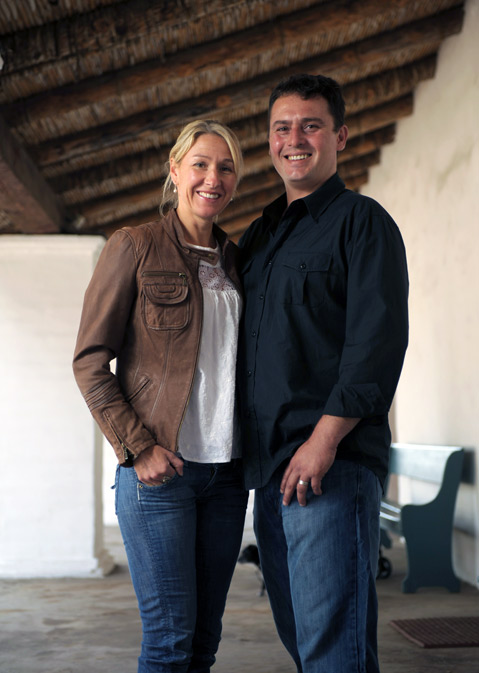
Carlos Abitia and Isabelle Gullo: Creators of CARE4Paws
“Isabelle and I have always been in the animal business,” said Carlos Abitia, who cofounded CARE4Paws with his wife, Isabelle Gullo. The couple — who met at the Santa Barbara County Shelter, where Gullo was volunteering and Abitia works as a technician — created the nonprofit because they realized that no matter how hard the various animal-welfare groups work, the cycle of overpopulation of dogs and cats continues. Explained Abitia, “Nothing is going to change without education.”
That’s where CARE4Paws comes in. In the past two years, the nonprofit has implemented half a dozen successful community programs to aid in the reduction of orphan animals. A veterinarian from Mexico, Abitia focuses on bilingual and bicultural outreach. “Spaying and neutering has never been a priority in the Hispanic communities,” Abitia said. “It’s due to a lack of awareness, not a lack of love for their animals.”
Gullo, a writer by trade, handles public relations and has been instrumental in spreading CARE4Paws programs into the community, especially through the annual Wags ’n’ Whiskers Festival, which is the largest adoption fair in the county. Their most recent program, Companion Pet Assistance, helps senior and low-income pet owners with the financial burden of properly caring for a pet. “The key was getting everyone to work together,” Gullo explained of how they’ve been able to achieve so much in such a short time.
Through their spay and neuter assistance to low-income pet owners, CARE4Paws — in collaboration with the S.B. Humane Society and area vets — helped more than 500 people fix their furry companions in 2010; they hope to double that in 2011. And they won’t stop there: By the end of 2014, Abitia and Gullo plan to have reduced the number of adoptable dogs in Santa Barbara shelters by 50 percent.
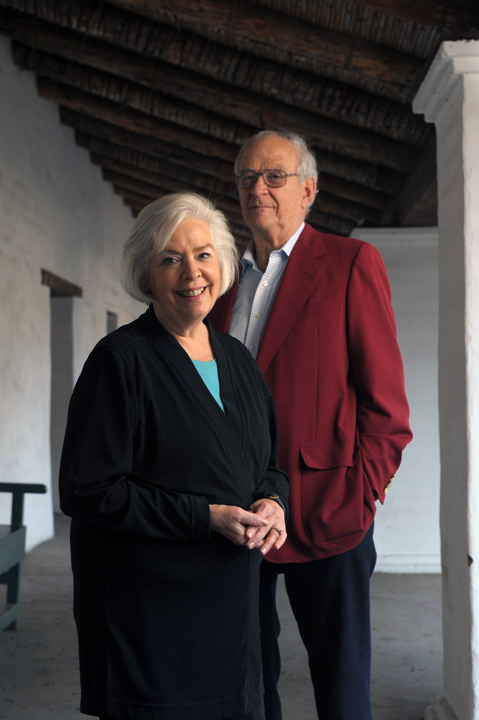
Betsy and David Kain: Giving Us Goats for Life
Ten years ago, when they retired and moved from Pittsburgh to Santa Barbara, Betsy and David Kain would never have believed how important goats and cows would become to them. Then, in 2006, their quiet lives took a turn when Rebecca Tinsley, founder of Network for Africa, approached them after a church gathering and invited them to volunteer with her program in Rwanda.
With a background as a clinical social worker, Betsy was using her psychotherapist skills to help Rwandans cope with the traumas of the 100-day genocide in 1994 that left as many as one million dead and continues to plague survivors dealing with malnourishment, post-traumatic stress disorder, and HIV, which thousands of raped widows contracted. But while in Rwanda, the Kains also learned of the need for cows and goats in rural villages. Once back home, they rallied the congregation at All Saints-by-the-Sea for donations, which allowed them to buy five Holstein cows. Goats for Life had begun, and five years later, the Kains’ nonprofit has sent 3,200 goats ($45 each) and 25 cows ($2,000 each) to needy Rwandans. The animals are life changers, explained the Kains, because they allow subsistence farmers to set up a sustainable business that doesn’t just rely on the crops, which can fail in bad weather.
Effervescent and passionate about the cause, Betsy spends as many as 60 hours a week working for their nonprofit, returning to Rwanda at least once a year to “check on progress and validate the results of the work.” Even Santa Barbara Independent staffers have taken note, said David, explaining with a chuckle, “Barney [Brantingham] was one of our first goat buyers.”



